![]()
This page is also available in French
![]()
Berlioz’s opera Benvenuto Cellini is set in Rome, and two particular locations in the city play a pivotal role in the plot.
The great carnival scene which forms the second tableau is set in the Piazza Colonna (end of Act I in the original Paris version of the opera, Act II in the Weimar version). In the duet and trio in the first tableau Cellini and Teresa agree to meet in Piazza Colonna during the carnival and then elope to Florence: ‘Demain soir, mardi gras, venez Place Colonne, au coin où Cassandro donne un opéra nouveau’. But they are overheard by Fieramosca who plots to thwart their plan. The stage directions for the carnival specify: ‘Piazza Colonna, at the corner of Corso street, in the background the Antonine column and a fountain.’
The carnival itself is abruptly brought to an end by the sound of the cannon fired three times from the top of Castel Sant’ Angelo, on the other side of the Tiber; at this point all the lights – the moccoli – are extinguished and the scene is plunged in darkness. This is greeted with delight by the followers of Cellini as he is able to make his escape (‘Ah! cher canon du fort Saint-Ange, Pour que le jour en nuit se change, Merci! l’instant est bien choisi’) but with dismay by Balducci, Fieramosca and the others (‘Maudit canon! le drôle était saisi’ – ‘Ah! maudit canon que Dieu confonde, Faut-il que ton fâcheux signal Sonne la fin du carnaval!’ in the Weimar version; the wording of the Paris version is slightly different).
![]()
All the modern photographs reproduced on this page were taken by Michel Austin in May 2007; other pictures have been scanned from engravings and other publications in our collection. © Monir Tayeb and Michel Austin. All rights of reproduction reserved.

The above photo has been scanned from John L. Stoddard’s Lectures, Volume 8 – Florence, Naples, Rome, by John L. Stoddard (Balch Brothers, 1898).
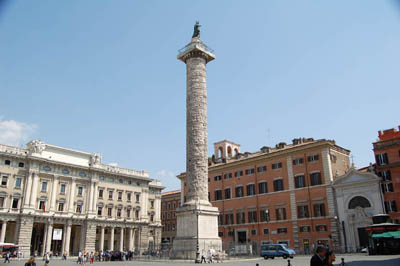
The column was erected by the emperor Marcus Aurelius, who reigned from AD 161 to 180, and dedicated to his predecessor Antoninus Pius, who reigned from AD 138 to 161.
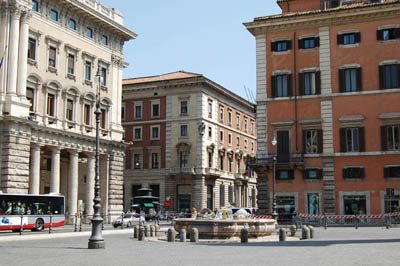
The road running from left to the right of the picture is Via del Corso.
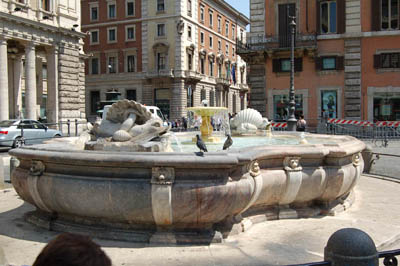
The fountain was designed by Giacomo della Porta, who with Pirro Ligorio laid the fountains in the Villa d’Este in Tivoli; he also designed one of the fountains of the Piazza Navona.
This massive fortress takes its name from the vision that Pope Gregory the Great had of the Archangel Michael on this site. It began life in AD 139 as Emperor Hadrian’s mausoleum. Since then it has served many functions, including in medieval times that of citadel and prison. It is now a museum and its 58 rooms cover all aspects of the castle’s history.

The above engraving was published in the Illustrated London News, 4 May 1850.
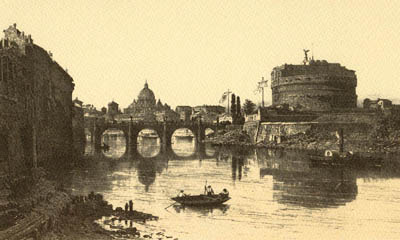

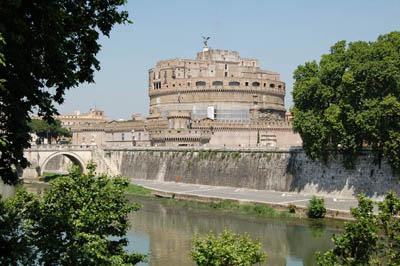

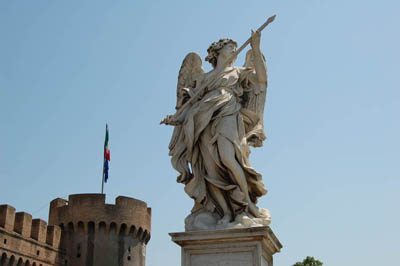
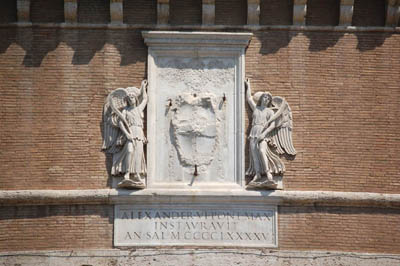
![]()
© Michel Austin and Monir Tayeb for all the pictures and information on this page.
Copyright notice: The texts, photos, images and musical scores on all pages of this site are covered by UK Law and International Law. All rights of publication or reproduction of this material in any form, including Web page use, are reserved. Their use without our explicit permission is illegal.